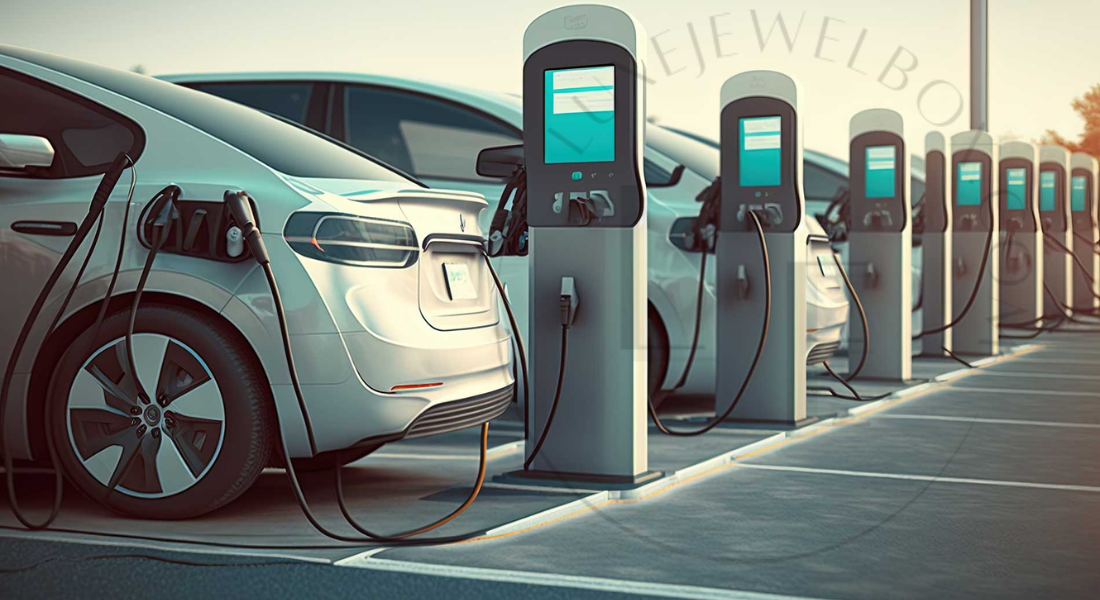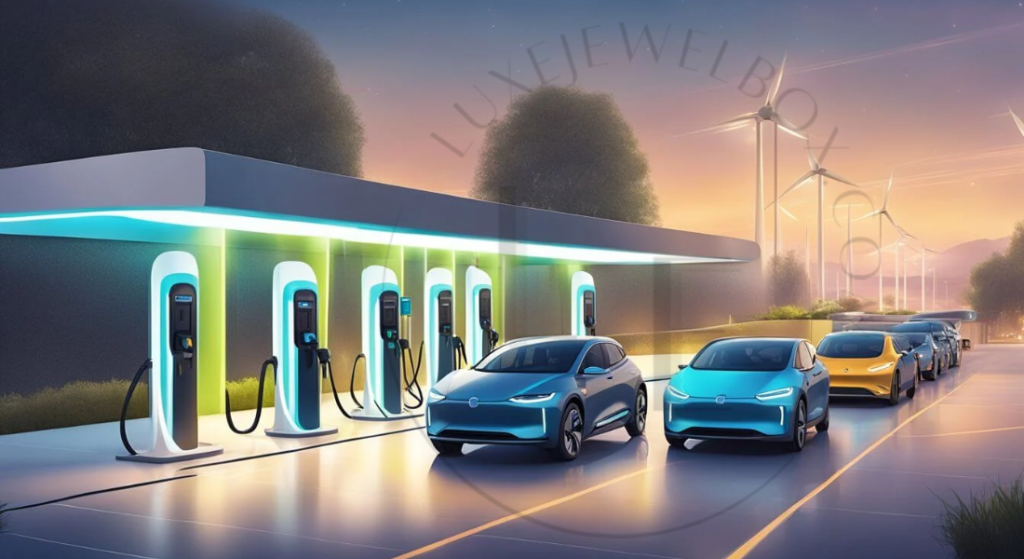Blog
The Importance of EV Charging Infrastructure for Sustainable Transportation
The world is undergoing a significant shift toward sustainability, and one of the most pivotal developments in this transition is the rise of electric vehicles (EVs). As more consumers and businesses embrace EVs, the demand for reliable and accessible EV charging infrastructure is growing at an unprecedented rate. EV charging infrastructure refers to the network of charging stations, systems, and technologies that support the operation of electric vehicles. It plays a crucial role in reducing the barriers to EV adoption, ensuring that electric cars are as convenient to use as their gasoline-powered counterparts. This article explores why EV charging infrastructure is essential for the widespread adoption of electric vehicles and how it contributes to the overall sustainability of transportation.
The Growing Demand for EV Charging Infrastructure
As the world focuses on reducing carbon emissions and combating climate change, the adoption of electric vehicles has become a cornerstone of sustainable transportation strategies. However, the success of EVs is not solely dependent on the vehicles themselves but on the availability and reliability of EV charging infrastructure. The increasing number of electric cars on the roads requires a robust charging network to ensure that drivers have access to the necessary energy to keep their vehicles running.
EV owners need access to charging stations that are conveniently located, easy to use, and capable of providing fast charging services. Without this infrastructure in place, the transition to electric mobility could face significant hurdles, including range anxiety, where drivers fear running out of charge in an area with limited charging options. Therefore, the growth and development of EV charging infrastructure is crucial to overcoming these challenges and accelerating the shift toward electric vehicles.
How EV Charging Infrastructure Supports Electric Vehicle Adoption
The availability of EV charging infrastructure directly influences consumers’ willingness to purchase electric vehicles. When potential buyers perceive a lack of charging stations, they are less likely to make the switch from traditional gasoline-powered cars to electric models. The fear of being unable to find a charging point or facing long wait times at charging stations can be a significant deterrent for many individuals.
To address these concerns, governments and private companies are working together to expand the EV charging infrastructure, ensuring that charging stations are readily available across cities, highways, and even rural areas. Public charging stations are particularly important as they provide a reliable solution for individuals who cannot charge their vehicles at home due to lack of a garage or access to private charging options.
The Environmental Impact of EV Charging Infrastructure
One of the primary benefits of EVs is their potential to reduce greenhouse gas emissions, which contribute to global warming and climate change. However, the environmental impact of EVs is not solely dependent on the vehicles themselves but also on the electricity used to charge them. As a result, the development of EV charging infrastructure must align with renewable energy initiatives to maximize environmental benefits.
By integrating renewable energy sources such as solar, wind, and hydropower into the EV charging network, we can ensure that electric vehicles are powered by clean, sustainable energy. This approach not only supports the environmental goals of electric transportation but also reduces the reliance on fossil fuels for vehicle energy. As more EV charging stations incorporate renewable energy, the overall carbon footprint of electric vehicles continues to decrease, making them a truly green alternative to traditional cars.
Challenges in Developing EV Charging Infrastructure
Despite the clear benefits of EV charging infrastructure, there are several challenges that need to be addressed to ensure its widespread availability and accessibility. One of the main challenges is the high cost of installing charging stations, which can be a barrier for both private businesses and public institutions. The expense of building charging networks, especially in rural or underserved areas, requires significant investment and long-term planning.
Another challenge is the need for standardization in the charging process. Currently, there are various types of chargers and charging standards, which can create confusion for EV owners. A lack of universal compatibility between charging stations and electric vehicles could hinder the seamless use of charging infrastructure, making it less user-friendly and more difficult for drivers to rely on the network.
Furthermore, as the demand for EVs grows, there will be an increased strain on the electrical grid. Charging stations require substantial amounts of energy, and if not managed properly, this could lead to issues with grid stability. Effective solutions, such as smart charging technology and demand-response systems, will be necessary to ensure that the grid can handle the increased load without causing outages or other disruptions.
Smart Charging Technology and the Future of EV Infrastructure
The future of EV charging infrastructure is closely tied to the development of smart charging technologies. These innovations are designed to optimize the charging process, making it more efficient and user-friendly. Smart charging systems allow for dynamic management of energy consumption, enabling charging stations to adjust the power delivered based on demand and grid capacity.
For instance, smart chargers can be programmed to charge vehicles during off-peak hours when electricity demand is lower, helping to reduce stress on the electrical grid. Additionally, these systems can enable vehicle-to-grid (V2G) technology, where electric vehicles can return electricity to the grid during periods of high demand. This not only enhances the functionality of EV charging infrastructure but also creates a more flexible and resilient energy system.
Another significant development in EV charging is the rise of ultra-fast chargers. These high-power chargers can significantly reduce charging time, making it more convenient for drivers to use public charging stations without long delays. As technology improves, the speed and efficiency of charging infrastructure will continue to advance, making electric vehicles even more appealing to consumers.
Government Support and Policy for EV Charging Infrastructure
Governments around the world play a pivotal role in the development and expansion of EV charging infrastructure. Policies that incentivize the installation of charging stations and provide funding for public and private sector initiatives are essential for accelerating the growth of the network. Governments can also implement regulations that require new buildings and developments to include EV charging capabilities, helping to ensure that infrastructure keeps pace with the increasing number of electric vehicles.
In addition, government-backed initiatives can help reduce the financial burden on consumers by providing subsidies or tax incentives for the installation of home charging stations. This would encourage more individuals to transition to electric vehicles, as they would have access to convenient, at-home charging solutions.

The Role of Private Companies in Expanding EV Charging Networks
While governments have a significant role to play, private companies are also driving the expansion of EV charging infrastructure. Companies like Tesla, ChargePoint, and others are investing heavily in the installation of charging stations in strategic locations. These private companies often partner with businesses, municipalities, and energy providers to deploy charging stations in areas where they are needed most.
In addition to expanding charging networks, private companies are also innovating in terms of charging technology. Some companies are developing solutions to provide mobile charging units, which can be deployed in remote areas or locations that lack permanent charging infrastructure. These mobile units can be particularly useful in emergency situations or for special events, ensuring that EV owners always have access to power when needed.
The Economic Opportunities of EV Charging Infrastructure
The development of EV charging infrastructure also presents significant economic opportunities. As the demand for electric vehicles increases, so does the need for charging stations and related services. This creates job opportunities in the installation, maintenance, and operation of charging stations, as well as in the manufacturing of charging equipment.
Moreover, the growth of EV infrastructure has the potential to stimulate local economies. Charging stations can become hubs for businesses, drawing customers and encouraging spending in nearby areas. The presence of charging stations in residential and commercial areas can also increase property values, as more people look for locations that provide convenient access to EV charging options.
Conclusion: A Sustainable Future with EV Charging Infrastructure
The development of EV charging infrastructure is vital for the future of electric transportation and the achievement of global sustainability goals. As more consumers adopt electric vehicles, the need for a robust, accessible, and reliable charging network becomes increasingly important. Governments, private companies, and other stakeholders must work together to overcome the challenges associated with building and expanding EV charging infrastructure.
With the right investment in technology, policy, and innovation, the future of EV charging infrastructure looks promising. By integrating renewable energy, improving charging speed, and expanding the network to underserved areas, we can create a more sustainable and efficient transportation system. As EV adoption continues to rise, the widespread availability of charging stations will be a critical factor in shaping the future of mobility, helping to reduce carbon emissions and create a cleaner, greener world for future generations.


